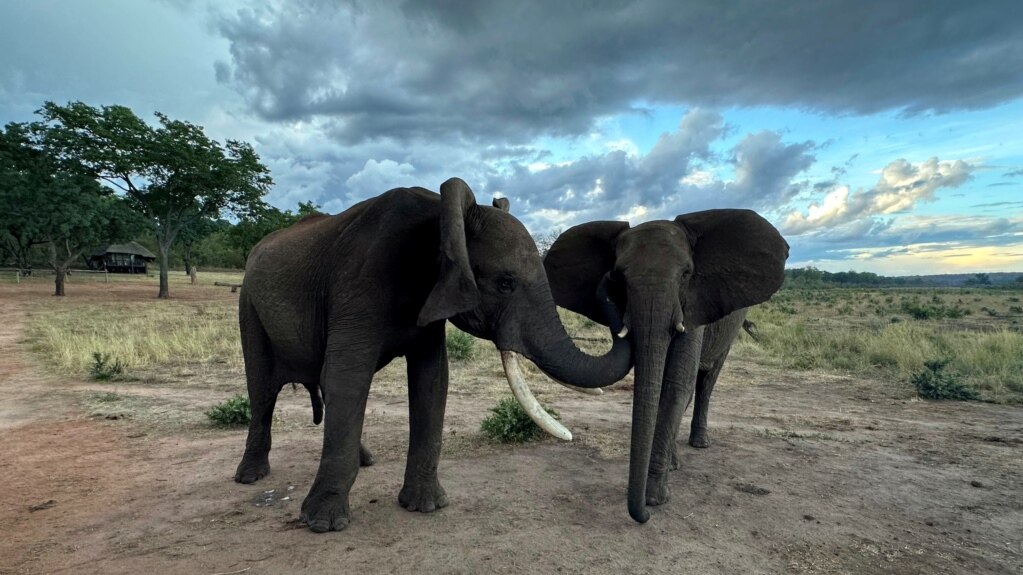People greet each other in many ways. They might say “hello” in different languages. They might physically do something like shaking hands, giving hugs, or exchanging kisses.
Elephants seem to have many greetings too. A recent study gives new information about these greetings, including how greetings differ depending on the animals’ sex and whether they are looking at each other.
The study was based on observations of African savannah elephants in the Jafuta Reserve in Zimbabwe.
Vesta Eleuteri of the University of Vienna in Austria was the lead writer of the study that appeared recently in Communications Biology.
"Elephants live in a so-called 'fission-fusion' society, where they often separate and reunite, meeting after hours, days or months apart," Eleuteri said.
Elephants are Earth's largest land animals. They are highly intelligent, with strong memories and problem-solving skills, and complex communication.
Female elephants of different family groups might have strong social bonds with each other, forming "bond groups." Earlier studies in the wild have reported that when these groups meet, the elephants perform special greeting ceremonies to announce and strengthen their social bonds, Eleuteri said.
Male elephants have different social bonds from females. Male greetings may serve to ease possible hostility. Male elephants greet mainly by smelling each other, reaching with their trunks, Eleuteri added.
The recent study gives details on around 20 movements tied to greetings. It showed that elephants mix these movements in exact ways with sounds. The different sounds are described as rumbles, roars and trumpets.
The study also showed how smell plays an important part in greetings. Elephant greetings include behaviors unusual for humans, including releasing body waste. Elephants can also release secretions from a special gland.
Elephants may greet each other by making gestures meant to be seen, like spreading their ears or showing their behinds. The creatures also use movements producing special sounds, or they may use movements that involve touching other elephants. Movements involving touching are known as tactile gestures.
Eleuteri suggested that elephants appeared to know what other elephants can see. "They preferred using visual gestures when their partner was looking at them, while tactile ones when they were not," Eleuteri explained.
Greeting behavior has been studied in a number of animals.
"Many other species greet, including different primates, hyenas and dogs," Eleuteri said.
These animal greetings help guide social situations by reducing tension or confirming social bonds, Eleuteri added.
The new research builds on earlier studies of elephant greeting behavior. The nine observed elephants - four females and five males - were "semi-captive." That means they freely moved around their natural environment during daytime and stayed in structures at night.
Greetings used by the female elephants closely matched the behavior of wild elephants. The greeting behavior of the male elephants appeared to be different from wild male elephants.
Wild male elephants are often alone, forming loose connections with other elephants.
The temporal gland is midway between the eye and the ear. That gland plays a part in elephant greeting by releasing a substance called temporin. Temporin contains chemical information about an elephant's condition. Elephants often use their trunks to touch the temporal glands of others.
Eleuteri said elephant body wastes “contain chemical information important for elephants, like the identity of the individual, their reproductive state or even their emotional state."
"Maybe they don't need to tell each other how they're doing, as they can smell it," Eleuteri added.
I’m John Russell.

